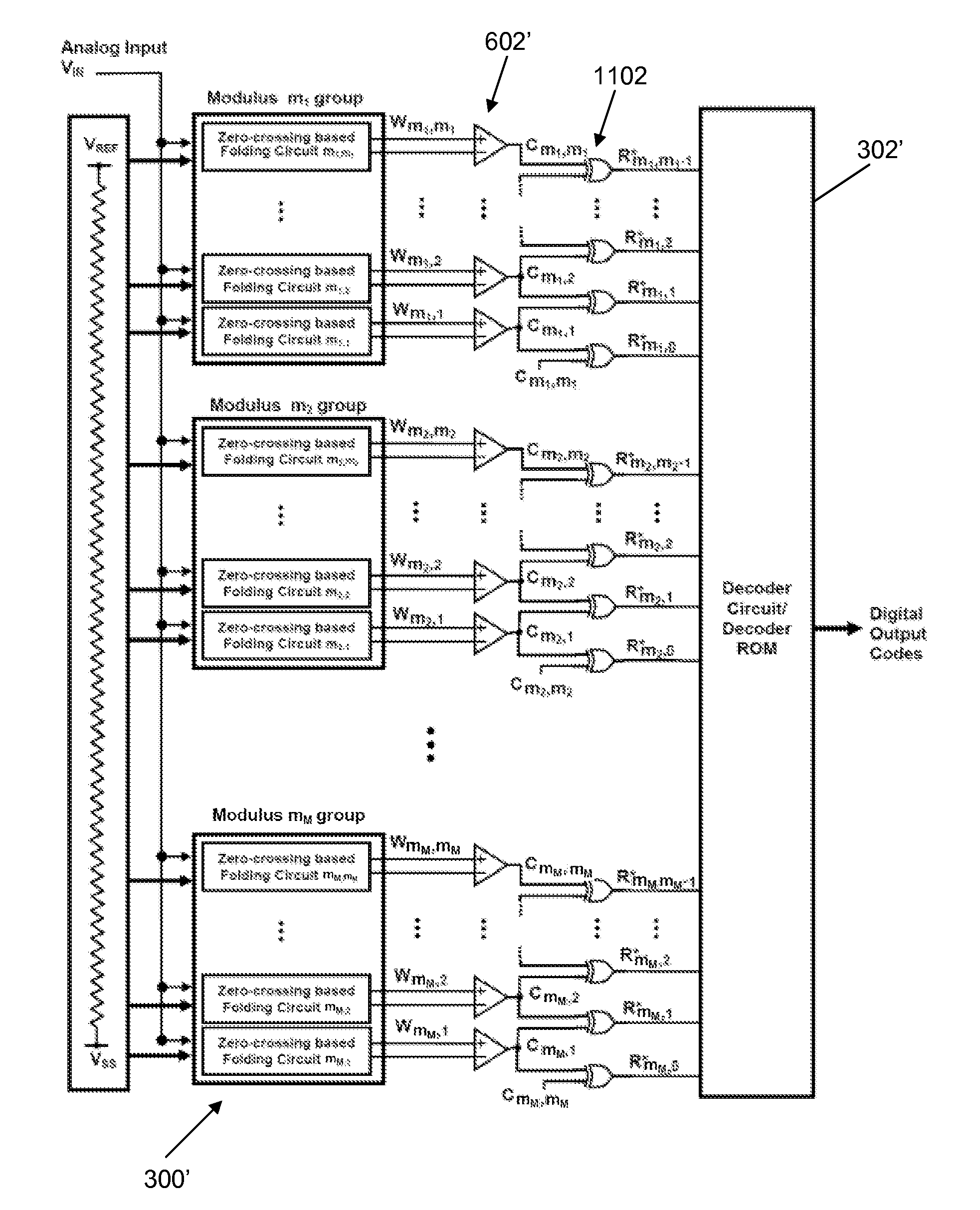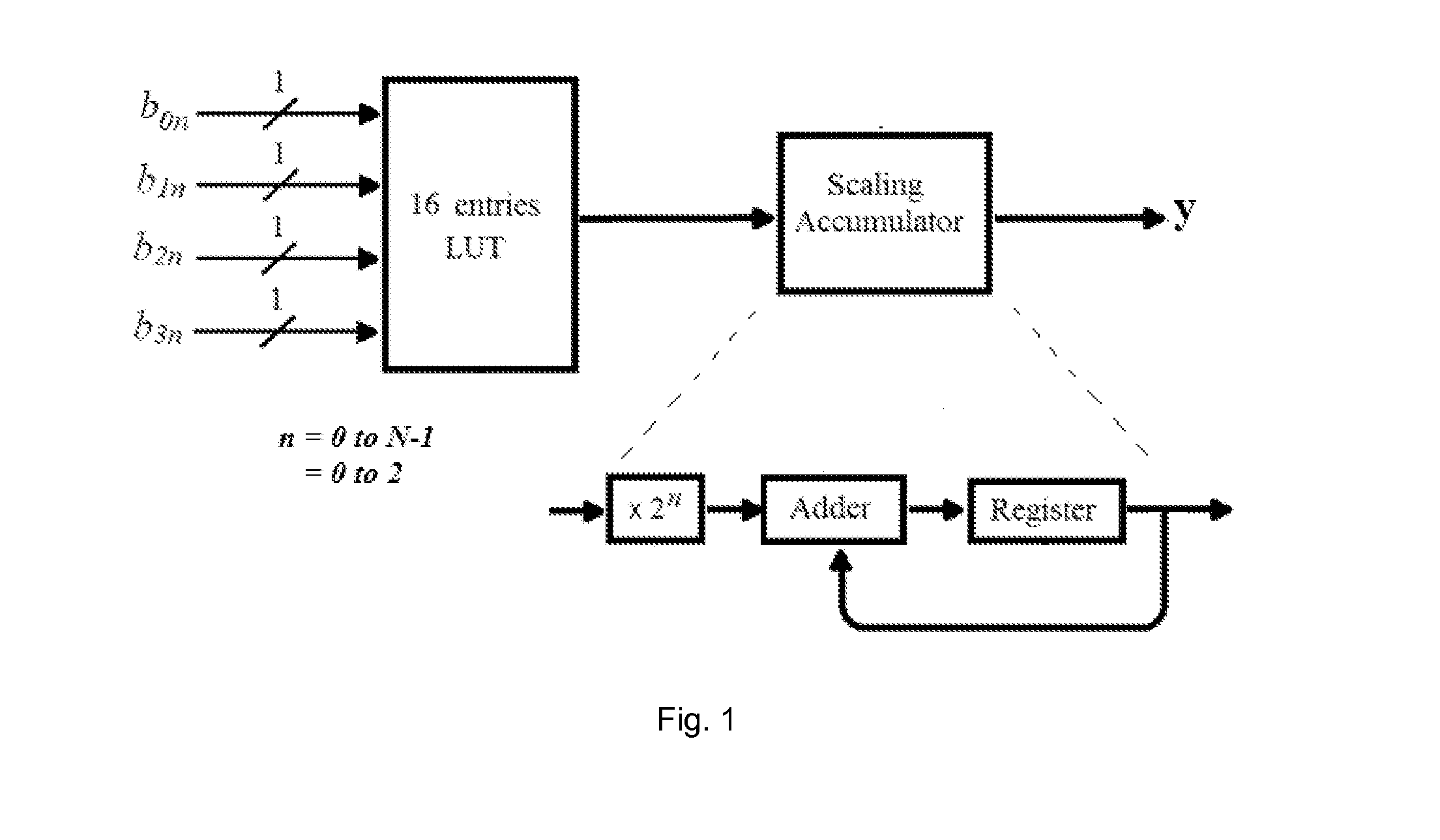System for rns based analog-to-digital conversion and inner product computation
- Summary
- Abstract
- Description
- Claims
- Application Information
AI Technical Summary
Benefits of technology
Problems solved by technology
Method used
Image
Examples
Embodiment Construction
RNS-Based Analog-to-Digital Converter
Analog-to-Digital Converter 300
[0082]FIG. 3 illustrates an example architecture that may be used to implement an ADC 300 according to an embodiment of the present invention. ADC 300 is an RNS-based ADC. In other words, it converts an analog input signal into a digital RNS representation based on a plurality of relatively prime moduli.
[0083]As discussed above, the RNS relies on modular arithmetic principles, which allows an integer to be uniquely defined by its remainders (the residues or residue digits) when divided by a set of pair wise prime positive integers (these integers are also known as moduli and the set of these integers is known as a moduli set). As such, a feature of the RNS is that an integer within a large dynamic range (defined by the product of the moduli) can be uniquely represented by a set of residue digits that have much smaller values corresponding to the size of the moduli set used in the computation. For example, the residu...
PUM
 Login to View More
Login to View More Abstract
Description
Claims
Application Information
 Login to View More
Login to View More - R&D
- Intellectual Property
- Life Sciences
- Materials
- Tech Scout
- Unparalleled Data Quality
- Higher Quality Content
- 60% Fewer Hallucinations
Browse by: Latest US Patents, China's latest patents, Technical Efficacy Thesaurus, Application Domain, Technology Topic, Popular Technical Reports.
© 2025 PatSnap. All rights reserved.Legal|Privacy policy|Modern Slavery Act Transparency Statement|Sitemap|About US| Contact US: help@patsnap.com



